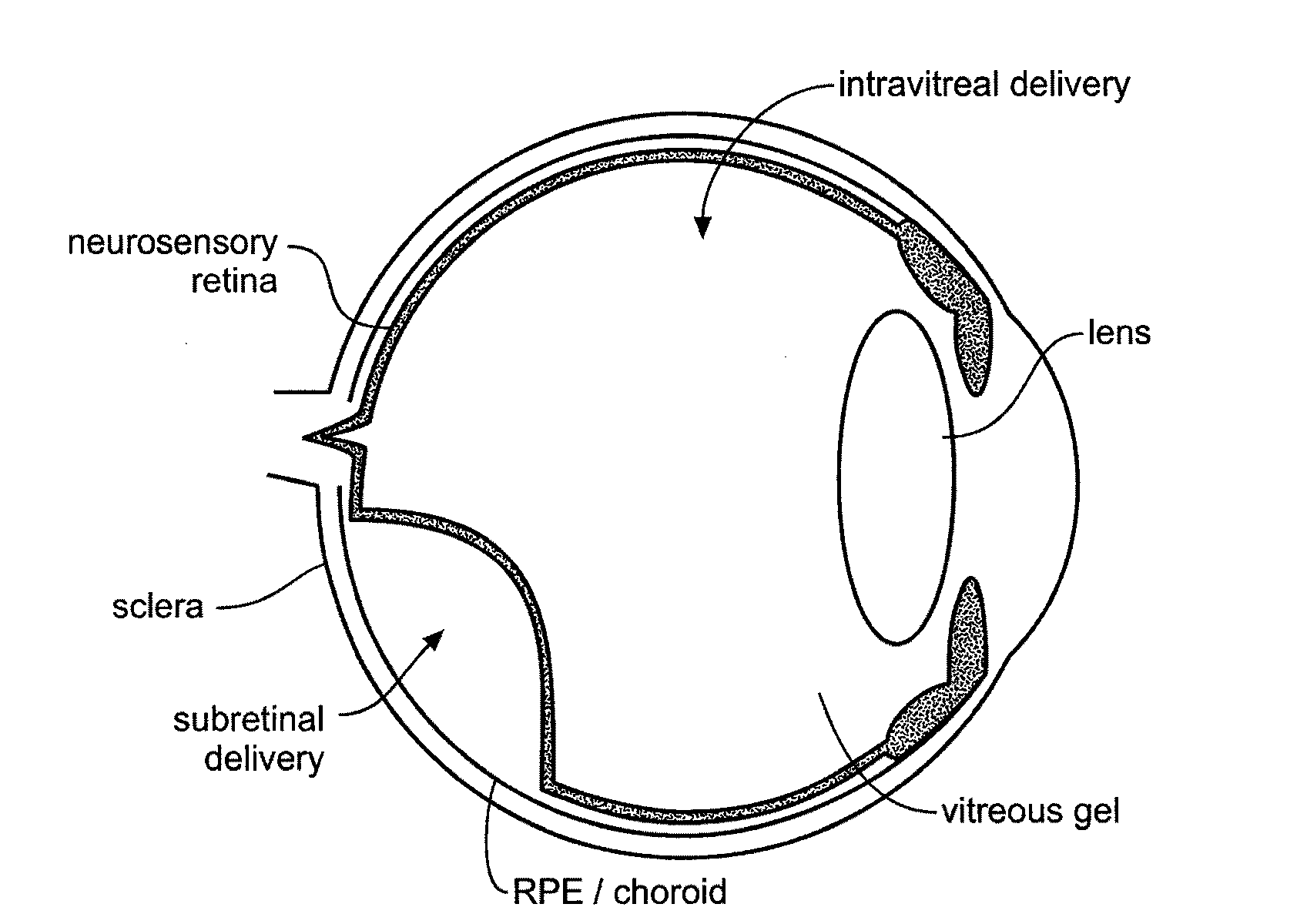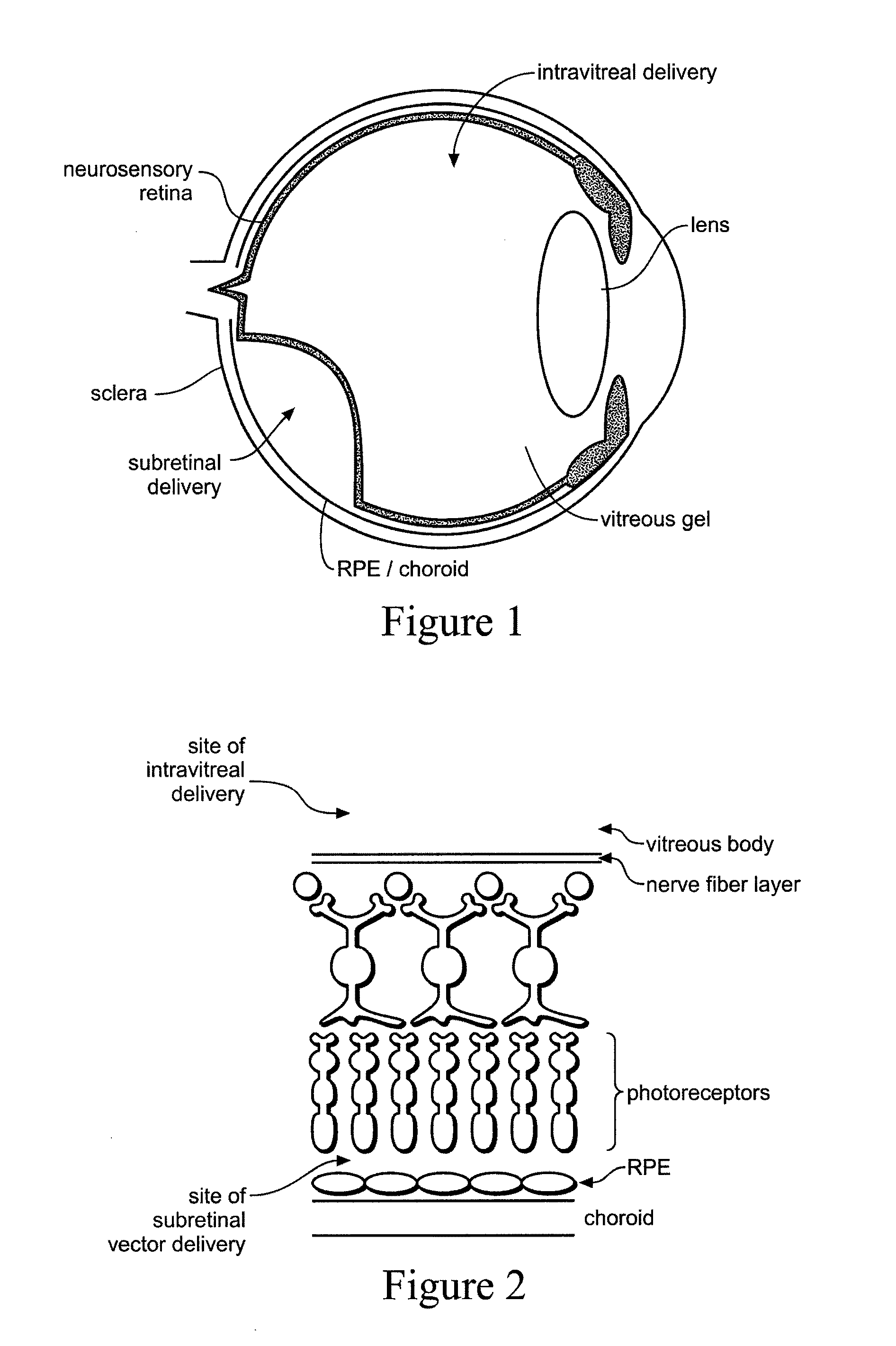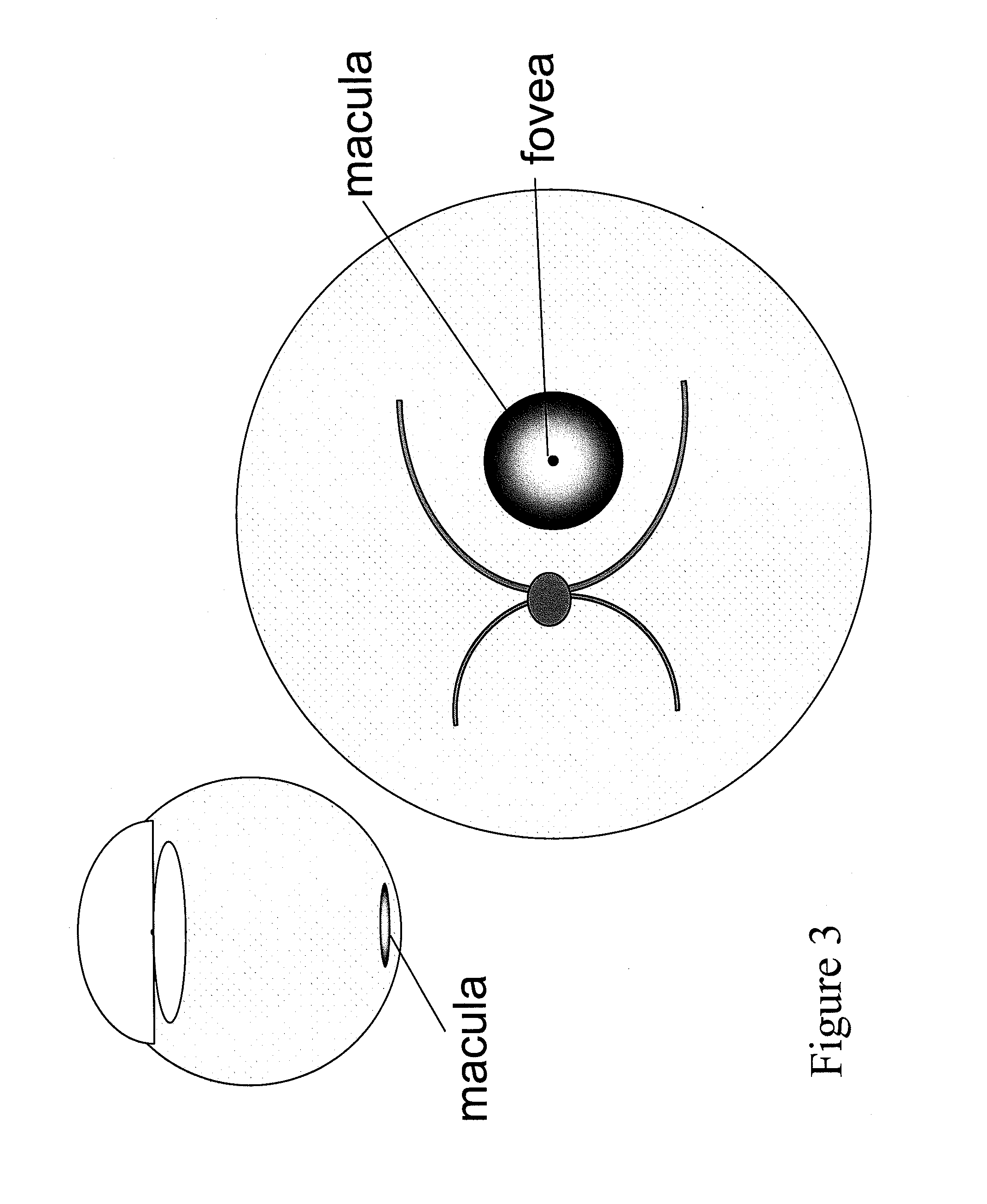Devices and methods for delivering polynucleotides into retinal cells of the macula and fovea
a technology of retinal cells and polynucleotides, which is applied in the field of devices and methods for delivering polynucleotides into retinal cells of the macula and fovea, can solve the problems of slowing the progression of decline of the human's visual function, slowing the slowing etc., to prevent or slow the progression of the human's visual function, and improve the human'
- Summary
- Abstract
- Description
- Claims
- Application Information
AI Technical Summary
Problems solved by technology
Method used
Image
Examples
example 1
Production of Construct AAV2 / 2.hRPE65P.hRPE65
[0125]AAV2 / 2.hRPE65P.hRPE65 consists of a linear single strand of DNA packaged in a recombinant adeno-associated viral protein capsid of serotype 2 (rAAV2). The AAV2 / 2.hRPE65P.hRPE65 genome incorporates 290 nucleotides of the wild-type AAV (wtAAV) ITR (Inverted Terminal Repeats) sequences that provide in cis the packaging signal, a cDNA encoding human RPE65 driven by a human RPE65 genomic promoter, and a BGH (Bovine Growth Hormone) polyadenylation signal.
[0126]The human RPE65 promoter fragment was amplified from human genomic DNA. The human RPE65 cDNA sequence was amplified from human retinal cDNA. After sequencing, the hRPE65 promoter fragment and the hRPE65 cDNA were cloned into plasmid pD10 with the promoter upstream of the cDNA. The sequence was subsequently cloned in the AAV backbone.
[0127]rAAV viral vectors are made by any of a number of methods known in the art including transient transfection strategies as described in U.S. Pat. N...
example 2
Open-Dose Escalation Study of an Adeno-Associated Virus Vector (AAV2 / 2-hRPE65p-hRPE65) for Gene Therapy of Severe Early-Onset Retinal Degeneration
Summary
[0130]Early-onset severe retinal dystrophy caused by mutations in RPE65 is associated with poor vision at birth. Progressive retinal degeneration typically leads to complete loss of vision in early adulthood.
[0131]As discussed in more detail in Example 3, we investigated the safety and efficacy of rAAV-mediated gene replacement therapy in 3 human subjects with this disorder, as part of an on-going clinical trial. In a phase I / II clinical trial, we delivered by subretinal injection a rAAV-2 / 2 vector expressing RPE65 cDNA under the control of a human RPE65 promoter (rAAV2 / 2.hRPE65p.hRPE65 (SEQ ID NO:1); 1×1011 DRP / ml; 1000 μl) in 3 young adult human subjects. These individuals, aged 17 to 23 years, were selected on the basis of their genotype, residual visual function and degree of retinal degeneration. We examined systemic vector dis...
example 3
Summary
[0194]3 subjects (aged 17, 18, 23) were enrolled and tested according to the clinical protocols of Example 2. Each subject had little or no vision in low light from an early age but retained some limited visual function in good lighting conditions. These individuals were selected because whilst they had advanced retinal degeneration they retained a limited degree of residual retinal function and might be expected to benefit from intervention. The subject characteristics at baseline are shown in Table 1A.
TABLE 1aSubject characteristics at baselineERGVARodsConesMaculaAgeAmino acid(LogRefractive(Bright(30 Hz(PERG / Sub.(Yrs)SexMutationchangeMAR)errorflash)flicker)Multifocal)#123Mhomozygousp. Tyr368His1.16−3.75 / −0.50 × 170No definiteResidualUndetectablec.response[1102T > C]#217Fc.Splice site1.52+1.50 / −1.00 × 90ResidualVeryUntestable[11 + 5G > A] +p. Gly40Serreduced &(nystagmus)[118G > A]delayed(4.0 μV;41 ms)#318Mc. [16G > T] +p. [Glu6X] +0.76−0.25 / −2.00 × 52No definiteVeryUndetecta...
PUM
| Property | Measurement | Unit |
|---|---|---|
| total volume | aaaaa | aaaaa |
| total volume | aaaaa | aaaaa |
| total volume | aaaaa | aaaaa |
Abstract
Description
Claims
Application Information
 Login to View More
Login to View More - R&D
- Intellectual Property
- Life Sciences
- Materials
- Tech Scout
- Unparalleled Data Quality
- Higher Quality Content
- 60% Fewer Hallucinations
Browse by: Latest US Patents, China's latest patents, Technical Efficacy Thesaurus, Application Domain, Technology Topic, Popular Technical Reports.
© 2025 PatSnap. All rights reserved.Legal|Privacy policy|Modern Slavery Act Transparency Statement|Sitemap|About US| Contact US: help@patsnap.com



